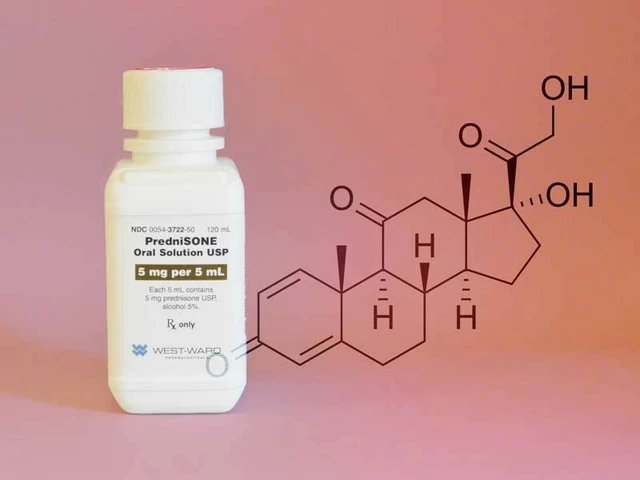Immunosuppressant Selection Tool
Immunosuppressant Selection Tool
Select your patient's clinical scenario to see which immunosuppressant might be most appropriate:
Recommended Immunosuppressants
Quick Takeaways
- Cyclosporine works by blocking T‑cell activation via calcineurin inhibition.
- Tacrolimus is a stronger calcineurin inhibitor but may cause more diabetes risk.
- Mycophenolate mofetil targets lymphocyte proliferation and is often paired with a calcineurin inhibitor.
- Azathioprine is an older option with a slower onset and higher liver‑toxicity potential.
- Belatacept offers a non‑calcineurin pathway, useful for patients with kidney‑friendly goals.
When doctors prescribe an immune‑suppressing drug after organ transplantation or for severe autoimmune disease, they don’t just pick one name out of a hat. Every medication has its own strengths, weaknesses, and monitoring quirks. Below you’ll find a side‑by‑side look at Cyclosporine and the most common alternatives, so you can see which fits a particular clinical scenario.
What is Cyclosporine?
Cyclosporine is a calcineurin inhibitor used to suppress the immune system, primarily after organ transplants and for severe psoriasis. First approved in 1983, it remains a cornerstone of post‑transplant therapy because it effectively prevents T‑cell activation while allowing doctors to adjust dosing based on blood levels.
How Other Immunosuppressants Stack Up
Below are the leading alternatives you’ll hear about in clinic notes.
Tacrolimus is another calcineurin inhibitor, marketed as Prograf in many countries. It is chemically distinct from cyclosporine but achieves a similar end‑point: halting T‑cell activation.
Mycophenolate mofetil (CellCept) works by blocking an enzyme called IMPDH, which stops B‑ and T‑cell proliferation. It’s often combined with a calcineurin inhibitor for a “triple‑therapy” approach.
Azathioprine is an older antimetabolite that interferes with DNA synthesis in rapidly dividing cells, including lymphocytes. It’s less potent but still useful when patients can’t tolerate newer agents.
Belatacept (Nulojix) is a fusion protein that blocks the CD80/86‑CD28 costimulatory pathway, offering a non‑calcineurin route to immune suppression.
Side‑by‑Side Comparison Table
| Drug | Mechanism | Main Indications | Typical Dose Range | Key Side Effects | Monitoring Needs |
|---|---|---|---|---|---|
| Cyclosporine | Calcineurin inhibition → ↓ IL‑2 | Kidney, liver, heart transplant; severe psoriasis | 2‑5 mg/kg/day in two divided doses | Nephrotoxicity, hypertension, gum hyperplasia, hirsutism | Blood trough level (100‑400 ng/mL), renal function, BP |
| Tacrolimus | Calcineurin inhibition (more potent) | Kidney, liver, heart transplant; atopic dermatitis | 0.05‑0.2 mg/kg/day in two doses | Diabetes, neurotoxicity, nephrotoxicity, tremor | Blood trough level (5‑15 ng/mL), glucose, renal function |
| Mycophenolate mofetil | Inhibits IMPDH → ↓ DNA synthesis in lymphocytes | Renal & heart transplant; lupus, vasculitis | 1‑1.5 g twice daily | GI upset, leukopenia, anemia, increased infection risk | CBC, liver enzymes, renal function |
| Azathioprine | Purine analog → disrupts DNA synthesis | Kidney transplant; IBD, autoimmune hepatitis | 1‑3 mg/kg/day | Liver toxicity, bone‑marrow suppression, pancreatitis | CBC, LFTs, TPMT enzyme activity (pre‑treatment) |
| Belatacept | Blocks CD80/86‑CD28 costimulation | Kidney transplant (especially when avoiding nephrotoxicity) | 10 mg/kg IV on days 0, 14, 28, then every 4 weeks | Infection (especially PTLD), infusion reactions | EBV serostatus, renal function, infection surveillance |

When to Choose Cyclosporine Over the Others
- Established Track Record: If a patient has been stable on cyclosporine for years, switching can risk destabilizing graft function.
- Specific Indications: Severe plaque psoriasis still relies heavily on cyclosporine because of its rapid onset.
- Cost Considerations: In many health systems, cyclosporine is cheaper than tacrolimus or belatacept, making it a first‑line option.
- Drug Interactions: Cyclosporine interacts with fewer CYP3A4 inducers than tacrolimus, which can simplify polypharmacy.
Scenarios Where an Alternative Shines
Even a solid drug like cyclosporine has blind spots. Below are common clinical crossroads.
- Nephrotoxicity Concerns: Tacrolimus can be slightly less harsh on kidneys at lower trough levels, though both drugs can harm renal function.
- Diabetes Risk: Tacrolimus raises blood sugar more than cyclosporine; for diabetic patients, mycophenolate or belatacept may be safer.
- Long‑Term Steroid Sparing: Mycophenolate mofetil adds a different mechanism that allows lower calcineurin inhibitor doses, reducing hypertension and gum issues.
- Pregnancy: Azathioprine is considered relatively safe in pregnancy compared to cyclosporine, which can cause fetal growth restriction.
- Kidney‑Friendly Regimens: Belatacept eliminates calcineurin‑related nephrotoxicity, making it attractive for long‑term kidney transplant recipients.
Practical Tips for Switching or Adding Therapies
Switching immunosuppressants isn’t a simple “stop‑and‑go.” Follow these steps to keep the graft safe:
- Review baseline labs: renal function, liver enzymes, CBC, blood pressure, and glucose.
- Choose a cross‑taper schedule: reduce cyclosporine by 25% every 3‑5 days while introducing the new drug at a low dose.
- Monitor trough levels: for tacrolimus aim for 5‑15 ng/mL; for cyclosporine keep 100‑400 ng/mL.
- Watch for early signs of rejection: rising serum creatinine, new proteinuria, or unexplained fever.
- Document adverse events daily for the first two weeks; adjust dose if hypertension, hyperglycemia, or GI upset appear.

Cost & Accessibility Snapshot (2025)
- Cyclosporine: generic versions widely available; average monthly cost AU$40‑$70.
- Tacrolimus: brand‑name Prograf still pricey; generic versions bring it down to AU$120‑$180 per month.
- Mycophenolate mofetil: generic CellCept costs about AU$150‑$200 monthly.
- Azathioprine: cheap generic, roughly AU$20‑$35 per month.
- Belatacept: IV infusion; yearly cost can exceed AU$25,000, usually limited to specialist centers.
Bottom Line
Cyclosporine remains a reliable workhorse, especially when cost and rapid effect matter. However, each alternative brings a unique profile that can solve specific problems-whether it’s less kidney strain, lower diabetes risk, or a pregnancy‑friendly option. Knowing when to stick, when to switch, and how to monitor makes the difference between a smooth recovery and a graft crisis.
Frequently Asked Questions
Can I take cyclosporine and tacrolimus together?
Usually no. Both are calcineurin inhibitors, so combining them greatly raises the risk of kidney damage, high blood pressure, and infections. Doctors may briefly overlap during a switch, but not for maintenance.
What lab test tells me if cyclosporine is at the right level?
A blood trough level drawn right before the next dose. Target ranges differ by organ type, but most transplant protocols aim for 100‑400 ng/mL.
Is mycophenolate safer for patients with high blood pressure?
Yes. Mycophenolate does not raise blood pressure like calcineurin inhibitors do. It’s often added to lower the cyclosporine dose in hypertensive patients.
Can pregnant women use azathioprine instead of cyclosporine?
Azathioprine is considered category D but has many case reports of safe use. Cyclosporine carries a higher risk of fetal growth restriction, so doctors often switch to azathioprine when pregnancy is planned.
Why is belatacept so expensive?
Belatacept is a biologic fusion protein requiring sterile IV preparation and specialized monitoring for EBV‑related cancers. Manufacturing costs and limited market size keep the price high.
How quickly does cyclosporine work for severe psoriasis?
Patients often see skin clearing within 2‑4 weeks of starting therapy, making it one of the fastest‑acting systemic options for plaque psoriasis.






Linda A
October 18, 2025 at 13:52
The trade‑off between price and potency feels like a quiet meditation on what we truly need from a drug; cyclosporine offers rapid relief without the gaudy expense of newer agents.